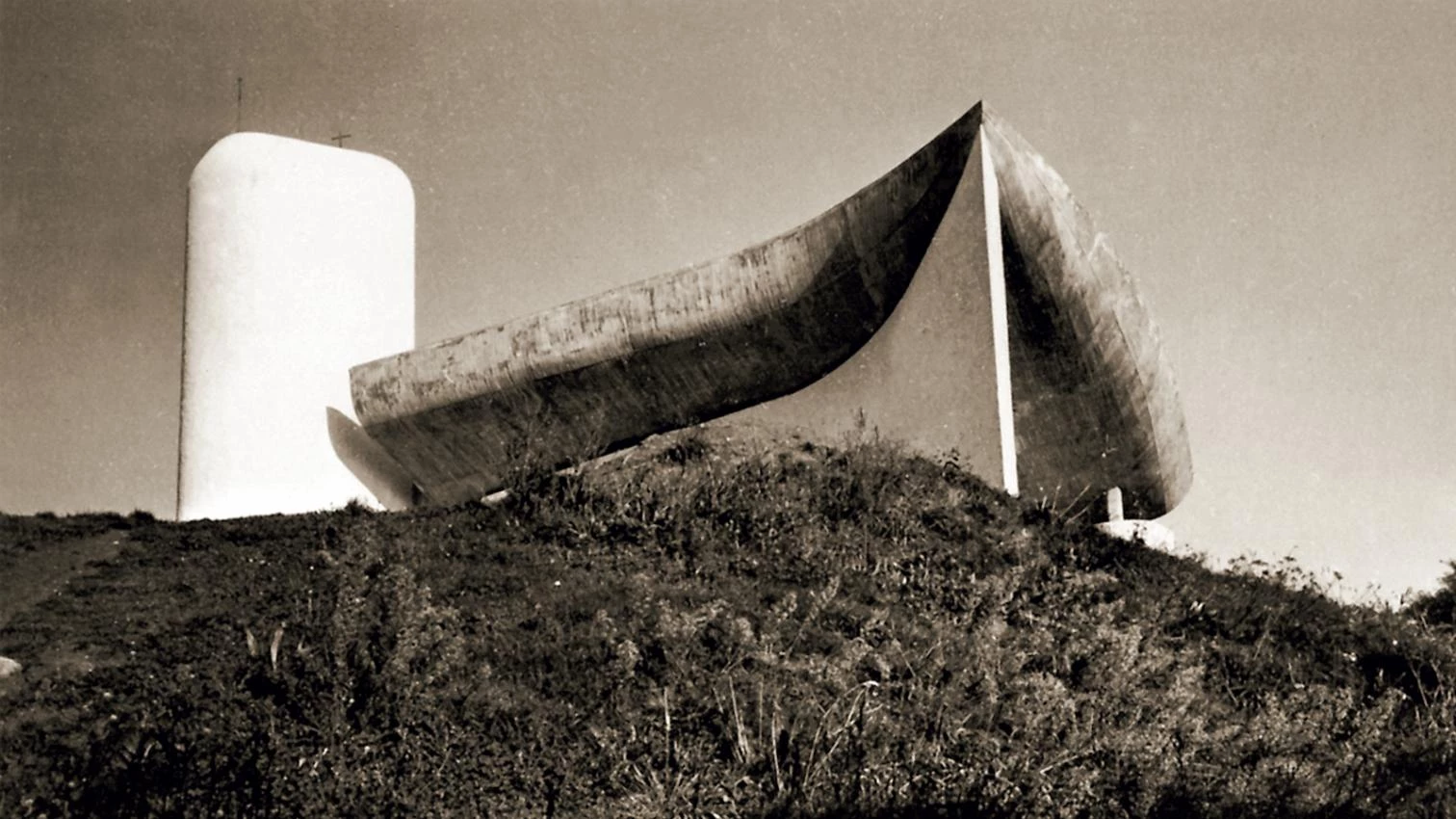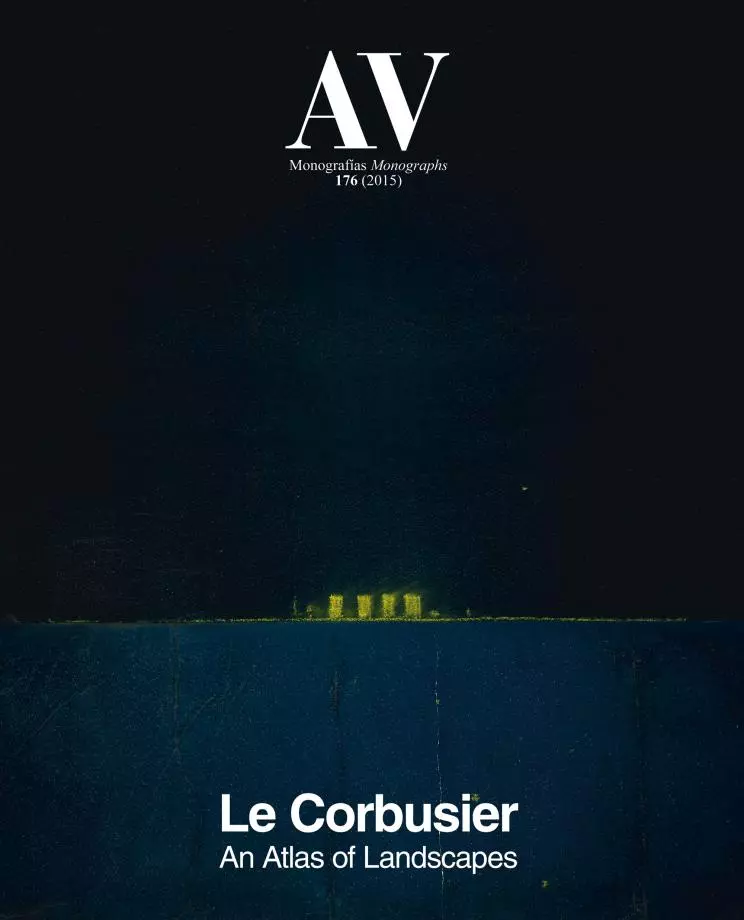Ronchamp: a Landscape of Visual Acoustics

Le Corbusier decried “les yeux qui ne voient pas”– unadventurous eyes incapable of seeing the new. He would frequently flip over one of his paintings in order to see it afresh; he proposed to those reading the Ronchamp volume of Les Carnets de la recherche patiente (The Chapel at Ronchamp) (1957) that they turn around the book and see the photographs of the chapel from the different angles: “Try to look at the picture upside-down or sideways. You will discover the game!”
What eyes should we use to look at Ronchamp’s landscape today, if we want to escape the gaze that recognizes only what it already knows? The Surrealists liked to be photographed with their eyes closed: what did they see?
Still, no twentieth-century landscape should ever be viewed with the eyes of Pliny or Carl Linnaeus; nor should they be seen with the eyes of the Romantics, of those men like Caspar David Friedrich or John Ruskin, who drew our attention to mists and clouds. We cannot escape our own time and thus are forced to look at Ronchamp as would Piet Mondrian, who considered himself a landscape painter, or John Cage, who produced sonic landscapes.
A sounding box draws in the sounds produced around it, even the inaudible ones. It gathers them to its interior and returns them to the exterior, not only amplified but transformed – made into form – as if they were finally themselves. The sounding box does not repeat; it is not a mirror. Inside, a mysterious mutation occurs. This is how a violin works, or a drum.
A sounding box in the form of a building was a phenomenon that Le Corbusier called “visual acoustics”: nature in chaos – an environment without meaning before the advent of the building – transformed, framed, and understood as landscape, at once resonating with and thanks to architecture. Although Le Corbusier dated his discovery of visual acoustics to an early trip to the Parthenon, it would not be until 1929 that, having seen the landscape from a small plane during aerial “promenades” through the skies of Argentina and Uruguay, described in Précisions, he would propose a work capable of integrating landscape and architecture in a visual counterpoint, fusing them within the same chord. The Plan Obus for Algiers, realized directly following these South American flights, was his first great composition of visual acoustics.
“Projected shadows, precisely delineated, but what enchanting arabesques and frets. Counterpoint and fugue. Great music!,” Le Corbusier wrote, on the very same page that invited readers to invert the photographs of Ronchamp...





